Key Takeaways
- Cleaning white baseball pants can be a challenge using a regular laundry detergents
- Understand and learn how stains are created and use correct removal methods with the right tools and techniques without damaging the white baseball pants
Table of Contents
- Key Takeaways
- Intro
- How do White Baseball Pants Get Stained?
- Different Types of Stains
- Materials Used in Baseball Pants
- Baseball Pants Styles
- Beware of Colorfastness
- Grass Types and Stain Characteristics
- Climate Region and Grass Types
- What Causes Stains
- Cleaning Agents
- Cleaning Agents that are NOT RECOMMENDED
- Which Cleaning Agent for My Stain?
- Final Words on Cleaning Baseball Pants
- You May Also Like
Intro
As a youth baseball coach, I like to see my players show up for a game looking sharp, with their jerseys neatly tucked in and bright white baseball pants.
Although my kids had had at least two pairs of baseball pants for each season, I recall staying up late at night to scrub and soak the dirty, grime-infused, it-has-been-through-a-boot-camp stains on their white baseball pants.
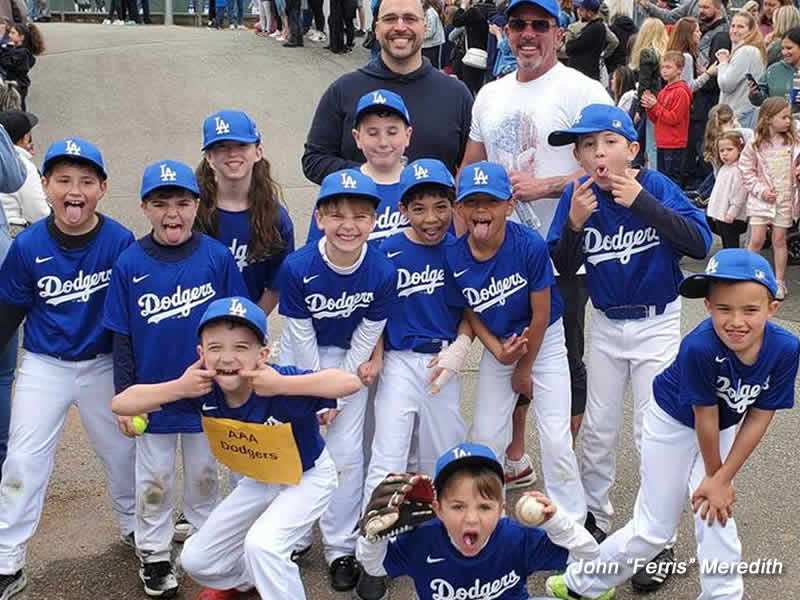
As someone who battled with these stain monsters for 10+ years, I gained an insight or two on effective methods to remove some of these stubborn stains. In this post, I will explain how to identify various types of stains and how to restore those white baseball pants to their former glory.
I know some fathers recommend using power washers to get the stains out. I don’t recommend this method as power washing severely weakens the fiber structure in baseball pants and will increase the likelihood of pants ripping during a game.
If your child is playing in a recreation league during spring, maybe these pants will be thrown out at the end of the season?
If your child is playing at more competitive level (i.e. tournament plays during weekends), I highly recommend having 2 or more white baseball pants for two reasons:
- Two pairs of baseball pants meaning less time pressure to get them washed in time for a game
- At the end of the spring season, it is harder to find a replacement white baseball pants that matches the existing pants (i.e. piping, color, etc)
How do White Baseball Pants Get Stained?
I can think of five ways baseball pants are stained:
- Sliding and Diving
- Sweat
- Food stuff
- Weather
- Equipment
Sliding and Diving
Sliding and diving is the most common way baseball pants collect stains when a player slides into home plate, dives to catch a fly ball, or a tumbles during a pickle run.
These athletic maneuvers often result in badges of honor consisting of grass, dirt, turf, or red clay stains, and can be stubborn to remove.
Sweat
Baseball is a physically demanding sport, and with physical exertion comes sweat. Sweat stains is not as colorful as grass or dirt stains, but they can discolor white fabric over time, giving it a yellowish hue.
Food stuff
Has your kid ever sat on a wad of chewed gum on a hot day? How about those fingers with yummy Cheetos or Spitz Spicy Sweet Chili sunflower seed residue that are wiped on their baseball pants? For young players, eating nachos, chocolate ice creams, and red Gatorade in the dugout and ending up with stained pants add to their baseball experience!
Rain
Rain can quickly turn a dusty diamond into a mudrudder challenge. Regular muds can also turn into red, calcinated clay soup caused by inexperienced coaches adding too much Quick Dry to dry the field. Calcinated clay stains need a special cleaner.
Equipment
Tar, sunscreen lotion, eye black and glove oil can all cause havoc on all baseball pants and jerseys. There is no one magic bullet that will clean them in one shot so they will need to be treated and washed multiple times.
Indeed, the ways to acquire stains while playing baseball are nearly as numerous and varied as the game’s rules. Each stain tells a story of a great play, a hearty meal, or a fun moment with the team. As you work on removing these stains, remember that they’re all part of the great game of baseball.
Different Types of Stains
Here’s a rundown of the common types of baseball stains and what they might tell you about the game:
Grass Stains
Arguably the most common and perhaps most challenging to remove, grass stains happen from sliding or falling onto the grassy parts of a baseball field.
Crushed grass blades release chlorophyll in them, a natural dye with strong green pigment, resulting in tough grass stain
They are usually brown or green in color, depending on the grass type and how fresh the stain is on baseball pants.
Dirt and Mud Stains
Many baseball fields have dirt infield and grass outfield, so dirt and mud stains are common after grass stains.
Ordinary dirt has lots of organic materials which can stain the uniform when kids slide, roll around, or rub against the ground during a game. If playing on a regular baseball field, dirt on field usually contains calcinated clay or soil conditioners.
You can expect these caramel colored stains anytime there’s contact with a defender while running, the pitcher’s mound, or the batter’s box.
Red Clay Stains
Some baseball fields use a particular type of red clay as part of their infield mix or use too much Game Saver to dry out the field aftr rain.
Red clay stains are not too common. Sliding or diving on these surfaces results in reddish-brown stains that can be tough and require alternate cleaning material and extra effort.
Turf Stains
Turf stains, also commonly referred to as synthetic grass or artificial turf stains, are another common stain found on baseball uniforms.
An artificial turf consists of synthetic fibers dyed in a rich green color. A freshaly installed artificial turf can transfer green dye onto clothing.
However, more common turf stain is caused by loose rubber pellets (“infill) that provide cushion protection to players
These stains are black or dark gray in color and are more difficult to remove, often requiring specific stain removal techniques or products designed for dye-based stains.
Sweat Stains
Baseball is an intense sport, so expect sweat stains, particularly around the waistband, arm pit, knees and crotch areas.
Sweat stains are usually seen around the white collar of a jersey (“yellow ring”) or in the arm pit area
Sweat stains are typically yellowish and build up over a period of time.
Food and Drink Stains
Stains from food stuffs, ranging from colored energy drinks to nacho cheese dribbles and ketchup or mustard splatters, can be messy but not too difficult to remove.
Blood Stains
Baseball can be a contact sport, and sometimes minor injuries happen. A scraped knee from sliding into base, nosebleed, or cut on a finger can leave blood stains on the uniform.
Eye Black Stains
Some players use the eye black to reduce glare from the sun or stadium lights. If wiped off with a pant leg or if it smears during the game, it can leave greasy black stains.
Pine Tar Stains
Pine tar is used on baseball bats for better grip, and it can leave brown, sticky stains that require special attention to remove.
Each of these stains has its personality, and understanding their origins is the first step in tackling their removal.
Sunscreen Protection Lotion or Spray
Most commercial sunscreen lotions (and tanning oils which are sometimes used on baseball gloves) contain the chemical Avobenzone.
Avobenzone can cause yellowish or orange rust-like stains when it comes in contact with iron found in city water.
Materials Used in Baseball Pants
Although stains can happen to any part of the baseball uniform, baseball pants suffers the most.
Baseball pants are a crucial part of a player’s uniform and play a significant role in the player’s comfort and performance on the field.
The material used for baseball pants determines the comfort, durability, and performance of the baseball pants.
- Polyester is a synthetic material that is lightweight, quick-drying, durable, less expensive than other materials. This material is also resistant to fading, wrinkling and shrinking, so it is very popular with local recreation leagues. Unfortunately 100% polyester pants do not breath so a young player can get hot quickly on a hot, humid day. Polyester contacts on a sweaty skin can also cause chafing and itching
- Cotton is a natural fiber that is often used for training pants, not game baseball pants. We all know that cotton is soft and breathable, but baseball pants made from 100% are susceptible to fading, shrinking, and wrinkling. Cotton also does not fare well in high friction situations so they tend to wear out quickly
- Polyester / Cotton Blend is an ideal mixture of high durability and breathability but it is difficult to find baseball pants made from this combination
Please note that color of the piping fabric is usually sublimated so color will not fade when used with Iron out or Oxy Clean.
The same is NOT true for a factory logo that may be embroidered or stitched on to the baseball pants. Threads are usually dyed These logo patches will fade after two or three washes.
Baseball Pants Styles
It is useful t know the style of baseball pants to kind of guess what kinds of materials are used.
When purchased used, the label containing the washing instructions will not be there so you are left to wonder how to wash your child’s baseball pants.
By knowing the pants styles, you can make an educated guess on the fabric type and remove the stains accordingly.
In youth baseball leagues, these three styles are used the most:
Traditional Open-Bottom (TOB) Pants
TOB pants are the traditional style which come with full-length legs with open hem at the bottom.
Open hem allows pants to move up and down during sprinting and sliding. TOB pants can be plain or piped which features a thin, rolled up fabric (“pipe”) that runs down the side of the leg. Think of piping as a pinstriping on a car.
TOB pants are traditionally made from thinner synthetic material to allow better cooling
Knicker Pants
Knicker pants feature a hem that stops around the knees, providing players with a shorter, more flexible pants that is ideal for maximum mobility on the field .
Knicker pants are slightly thicker and some have 50/50 cotton to synthetic mixture.
Stirrup Pants
Stirrup pants are another classic style of baseball pants which feature a loop that goes under the foot.
Stirrup pants were mostly worn during the 1970s and other than Classic games days and old timer coaches, few young players wear this pants design.
Stirrup pants tend to be made with a fabric with higher cotton content so washing and scrubbing methods need to be more gentle).
Slider Pants
Slider pants feature a reinforced material in the knees, hips, and thigh areas to provide extra protection and durability during slides.
Primarily designed for youth ball players, slider pants come in traditional open bottom or knicker styles and have thicker padding materials in the butt and knee areas.
Instead of slider pants, youth players may wear sliding shorts underneath their baseball pants.
Beware of Colorfastness
Colorfastness is a term used to describe how well dye adheres to a fabric material, resistance to fading and discoloration.
Although all fabric with pigments fade eventually when the molecular bond between the fabric fibers and dye breaks down, a method used to apply the dye plays a large role in color fading.
In white baseball pants, you need to be concerned about two things:
- Will my piping fade?
- Will the logo on the pants fade?
There is no way to know for sure but in my experience, most piping materials are 50% cotton and 50% polyester where colors are infused into fabric (i.e. sublimated).
However, threads used to stitch or embroider manufacturer logos (i.e. Nike logo) go through simple bale dyeing method (“dunking” thread into a vat of dye) which is not fade resistant.
In my experience, Oxy-Clean had no problems with piping materials but the color on the manufacturer logo always faded after a wash or two.
Grass Types and Stain Characteristics
Did you know that different types of grass have their own staining characteristics?
In general, the darker and more richly (chlorophyll) pigmented the grass will create more stubborn stains.
Regardless of the type of grass, time is of the essence when it comes to tackling grass stains.
The sooner you can treat the stain, the more likely you will be able to remove it completely
Below is a list of five grass types commonly found in the US.
Kentucky Bluegrass
Grown in cool areas, Kentucky Bluegrass has a rich, dark green color and tends to leave a greenish-brown trail on white baseball pants.

This type of stain often requires a pre-treatment with a laundry detergent or stain remover before laundering.
Ryegrass and Fescue
Ryegrass and Fescue, also cool-season grasses, create stains similar to Kentucky Bluegrass.

Due to high level of chlorophyll, they leave a brighter green stain. A good scrub with a detergent/stain remover mix usually does the trick.
Bermuda Grass
A favorite in warmer climates, Bermuda grass is a deep green grass that can leave rather stubborn stains due to its high pigment content.
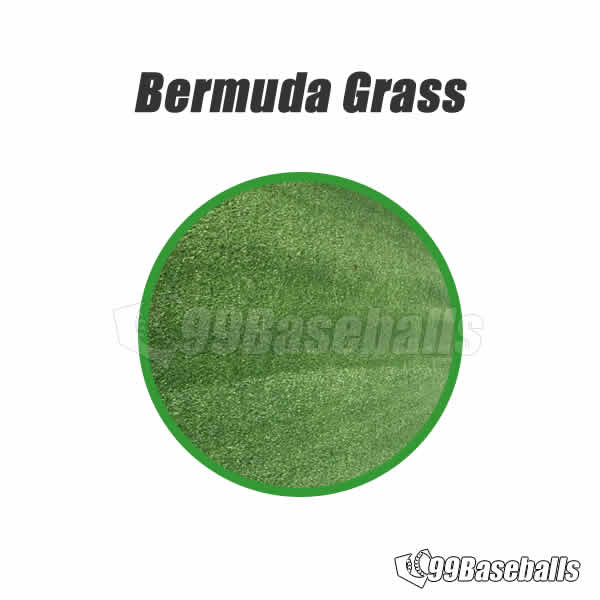
These stains are usually a rich green color and may require multiple treatments with a stain remover and possibly a soak in a solution of water and color-safe bleach.
Zoysia Grass
Zoysia grass, another warm-season type, also leaves dark green stains that can be stubborn to remove.
They often require pre-treatment and a good soak before laundering.
Buffalo Grass
Buffalo grass is a hardy, drought-resistant grass that tends to have a lighter green color than others. The stains it leaves can be less intense but still need pre-treatment for successful removal.
Climate Region and Grass Types
Primarily due to regional differences in climate, type of grass found on ball fields can vary across the United States.
Here are the key types of grass used in the four major regions of the U.S.:
Northeast region
The Northeast region experiences cold winters and moderate summers, making cool-season grasses the most appropriate choice.
Kentucky Bluegrass is the most commonly used because it’s hardy and can withstand the region’s weather fluctuations. Ryegrass and Fescue are also used, especially for their fast growth and tolerance for shade and traffic.
South region
The South experiences hot, humid summers and mild winters, making warm-season grasses a better fit.
Bermuda grass is popular here because of its heat tolerance and ability to remain green during summer.
Zoysia grass is another good choice for the southern region because it’s resistant to drought and wear.
Midwest region
Like the Northeast, the Midwest region often employs cool-season grasses due to the cold winters.
Similarly, Kentucky Bluegrass is a popular choice in this region, often mixed with Perennial Ryegrass and Fescues. These blends provide a balance between color, durability, and growth rate.
West region
The Western region is diverse, ranging from the hot Southwestern states to the cool Pacific Northwest.
In the Pacific Northwest, cool-season grasses like Kentucky Bluegrass and Ryegrass are common due to the cool and wet climate.
In contrast, the Southwestern states, including California, favor warm-season grasses. Bermuda grass is often used because it can tolerate the intense summer heat.
In more arid regions, Buffalo grass, a drought-resistant species, might be used.
It’s important to note that a baseball field’s grass type is not just dependent on the regional climate. The level of play, field usage, maintenance capabilities, and budget also play a significant role in determining the most suitable grass type for each baseball field.
What Causes Stains
Stains form when a staining agent like carbon black or chlorophyll are absorbed by the fibers of the fabric and coloring molecules are trapped inside.
It is important to avoid using hot water to clean stains as protein-based stains will set quickly inside fibers.
Lastly, before attacking stains with cleaners, make sure to shake-loose or scrub off any caked on dirt or grass.
Cleaning Agents
There are many products that are made specifically to clean white baseball pants but these cleaning products tend to be expensive.
Instead, you can use these four inexpensive agents to clean your child’s stained white pants:
Fels Naptha Laundry Bar and Stain Remover(check the latest price)
- Great for spot cleaning most stains (except turf stains)
- Rub the bar in the effected area and wash normally
- To treat larger area, dissolve Fels Naptha (about 1/3 bar) in 4 gallons of hot water and soak the pants for 2 hours
- Thankfully, Fels Naptha no longer contain benzene (very bad chemical)
Iron Out (check the latest price on Iron Out)
- The BEST solution for removing calcinated clay and soil conditioner from white pants (rust-like stains)
- Soak the pants in 4 gallons of hot water + 1/2 cup of Iron Out
- Soak for 1 hour (do not soak overnight as Iron Out will weaken the fabric)
- Dispose water then fill the bucket with cold water and rinse out the pants ***
- Place your pants in the washer with 1/2 cup of Oxy-Clean Revive, then wash on full or heavy-duty cycle with cold water
Oxi-Clean “Max Force” Spot Cleaner (check the latest price)
- Iron Out is great for removing calcinated clay and soil conditioner from white pants (rust-like stains)
- Instead, you need to soak them in the Iron out solution for 1 hour (NOT overnight)
- 4 gallons of warm water + 1/2 cup of Iron Out
- Soak for 1 hour (do not soak overnight as Iron Out will weaken the fabric)
- Dispose water then fill the bucket with cold water and rinse out pants ***
- Wash with Oxy-Clean Revive (1/2 cup on full wash cycle in cold water)
Oxi-Clean “Revive” (check the latest price on OxyClean Revive)
- Used to treat larger stains
- 4 gallons of warm water + cup of Oxy Clean Revive
- Soak for 2 hours
- Dispose water then fill the bucket with cold water and rinse out pants ***
- wash in cold water with regular laundry detergent
Pink Zote Soap Bar
- Good for removing a myriad of food stains on baseball pants
- It contains sodium tallowate and glycerin to break down greasy stains
- Stained baseball pants should be soaked in clean, warm water for 1 hour
- Rub the soap bar on the affected area, then rub the fabric together
- Wash in warm water with regular laundry detergent
Simply Green
- Good for cleaning general dirt, gunk, or grass stains
- Dampen the pants with water
- Pre-treat stain on both sides of fabric
- Let it stand for 30 minutes, then use a soft brush to scrub the area
- Wash as normal in your washing machine
Eucalyptus Oil or Tea Tree Oil
- Good for cleaning turf stains
- Apply a small amount on a rag and dab the stained area
- Let it stand for 30 minutes, then use a soft brush to scrub the area
- Wash as normal in your washing machine in cold water
- DO NOT soak and do not leave it on longer, especially for pants with higher synthetic content
Dawn Platinum Powerwash Dish Spray
- Good for breaking down greasy stains
- Spot treat or soak overnight
- Rinse with clean water before placing in the washer
- Normal wash in warm water with laundry detergent
OUT White Brite (listed but not recommended)
- I list this product here because it works well on removing inorganic stains like Gatorade and turf stains
- BUT, it contains sodium pyrosulfite (metabisulfite) which is bad for your health and the environment so I suggest using one of the alternate products mentioned above
** Not all dirt fields are the same. Many inexperienced coaches dump “Game Saver” material to rapidly dry out wet spots after rain. Game Savers are made with calcinated clay (which has a distinct reddish in color) so Oxy-Clean treatment will be unable to remove the reddish stain completely.
*** Excess detergent materials like Iron Out, Oxy Clean, and Laundry Detergent may generate lots of suds. Excess suds will most likely trigger your laundry washer to stop working so make sure to rinse out the pants first.
Cleaning Agents that are NOT RECOMMENDED
I personally do not recommend these cleaning products when trying to remove stains on baseball pants due to the fact that it is really difficult to properly control titration without ruining the synthetic fibers on a pair of baseball pants.
- Household bleach
- Hydrogen Peroxide
- Ajax or Comet (power bathroom cleaner)
- Murphy Oil Soap
- CLR
- OUT Brite Lite – contains sodium metabisulfite (bad for health and environment)
It’s worth repeating that whatever you do, DO NOT USE BLEACH to whiten your child’s baseball pants. It may look fine after the first wash, but the fabric and thread will weaken considerably and most likely result in ripping during a game.
Which Cleaning Agent for My Stain?
Generally speaking, if you have a top-loading washer, you can just transfer the soaked pants and wash them.
If you have a front-loading washer like me, please note that front-loaders are more sensitive to suds. I recommend you read the user’s manual for your washer but what I do is to drain an loosely rinse and ring dry the soaked pants before putting them into the washer.
Blood stains
- Oxi Clean Max Force
- Oxi Clean Revive
Dirt / Mud stains (no clay)
- Fels Naptha (pre-treat)
- Oxi clean Max Force
Dirt / Mud stains (calcinated or red clay)
- Iron out
- Simply Green
Food stains
- Dawn Dish Soap (spot traeat)
- Pink Zote or Fels Naptha
- Simply Green
Grass stains
- Fels Naptha
- Dawn Dish Soap
- Pink Zote
Pine Tar / Tar / Eye Black / Sunscreen stains
- Goo Gone or Goo Off (spot treat)
- Oxy Clean (secondary)
Sweat stains
- Fels Naptha
- Pink Zote
Turf stains
- Eucalytus Oil or Tea Tree Oil (spot treat)
- Dawn Dish Soap (secondary treatment)
Final Words on Cleaning Baseball Pants
In most cases, stains on baseball pants consist of two or more staining materials. Hence, the number of ways to acquire stains while playing baseball are nearly as numerous and varied as the game’s rules.
I have on many occasion grumbled at cleaning pants late at night so that they will be ready the next day during a marathon 4 day tournament weekend.
Looking back now years later, I feel much differently about the experience. I now remember that proud, happy face wearing his bright white baseball pants to play yet another game.
So take it from me. Each stain tells a story of a great play, a hearty meal, or a fun moment with the team. As you work on removing these stains, remember that they’re all part of the great game of baseball and you too will fondly remember those moments.
Well, I hope you found this post to be helpful!
You May Also Like
How to Slide – Proper Techniques for Young Players
Baseball sliding can be fun and exciting but only if done correctly. Learn how.




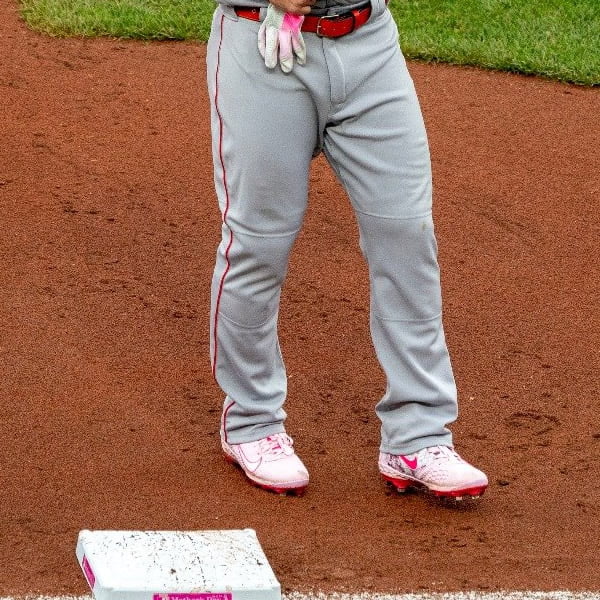




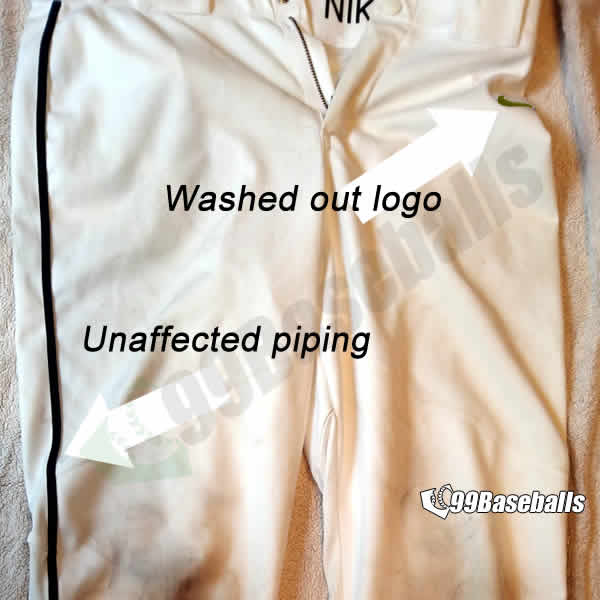
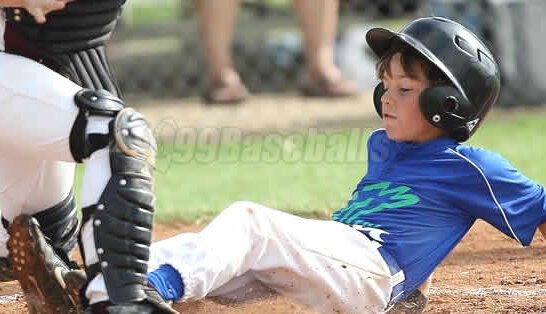
Charles
Monday 5th of June 2023
Confused by your comments on Iron Out
'Instead, you need to soak them in Iron out solution over night'
'Soak for 1 hour (do not soak overnight as Iron Out will weaken the fabric)' ???
Baseball Dad
Monday 5th of June 2023
Hey Charles,
Thanks for catching the error. The correct method I recommend is to soak the pants for 1 hour (NOT overnight). It has been corrected. Thanks again!